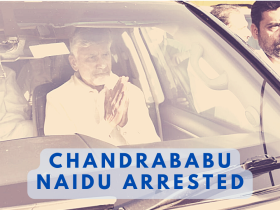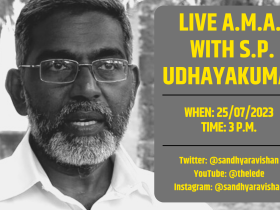On every continent, journalists have faced difficulties investigating environmental issues. Since 2009, at least 13 journalists have been killed working on environment-related stories, according to the Committee to Protect Journalists. CPJ is still investigating 16 additional deaths, so there may be as many as 29 cases. Other journalists were forced to shut down their newspapers. Many, constantly under threat, simply can’t work anymore, because they have been forced into hiding or can’t find news outlets willing to risk publishing their stories..
One subject is particularly perilous: documenting environmental damage by the mining industry. Green Blood is a project designed to finish work begun by some of these journalists shut down by the danger inherent in shedding light on one of the darkest and most destructive industries in our global economy.
Through this unique collaboration with 15 media partners, we investigated mining multinationals. We looked into a nickel mine in Guatemala, a gold mine in Tanzania and sand mining in India.
During eight months, we gathered documents, collected testimonies and conducted scientific tests, digging deep into potentially illegal mining activities and their impact on the environment. As a consortium, we shared our skills and knowledge to trace whole supply chains, from the mine to end products consumed by individuals around the world.
By publishing the Green Blood Project all together at the same time in 25 countries, we are once again sending a powerful signal to the enemies of the free press: “You stopped the messenger, but you won’t stop the message.”
The Beach Miners Of Tamil Nadu
Despite the ban, they continued to mine and export at will. This was recorded in the June 2017 report submitted to the Madras High Court by the Amicus Curiae V Suresh.
“The total quantum of exports post the ban period amounts to 28% of the total exports made from 2000-2017,” he wrote.
Between 2000 and 2017, close to 78 lakh metric tonnes (MT) of beach sand minerals had been exported. During the ban period, since September 2013, around 22 lakh MT had been sent abroad, almost one-third of the total exports of 16 years.
The miners had behaved with impunity – that much was clear.
But we are getting ahead of ourselves. First, what are beach sand minerals and why are they important?
Beach Sand Minerals
These are minerals mixed in with the sand in the coasts of Tamil Nadu, Andhra Pradesh, Kerala and Odisha. While only government (centre and state) mines in Odisha and Kerala, private players mine the beaches of Tamil Nadu and Andhra Pradesh. Of the two, Tamil Nadu has the sands richer in minerals.
Upon processing, beach sand yields rare earth minerals (also called beach sand minerals or BSM) like garnet, ilmenite, rutile, zircon, leucoxene, sillimanite and monazite. While most of these minerals are coveted for industrial use as abrasives, many find their way to the international weapons industry.
Monazite in particular is classified as an atomic mineral and is not allowed to be mined or exported by private players. As per Indian law, monazite, which is a remnant after processing of other minerals, must be stored underground so that its radioactivity does not harm humans or animals. Upto 0.25% monazite equivalent is allowed in export consignments of the other minerals. This is because monazite can be processed or cracked to yield thorium, a nuclear fuel.
The History of The Industry
Here is a recap of what has happened so far in the history of the beach sand mining industry in India and the legal battles that the miners have fought since 2015.
The Scale of Illegal Mining
A number of reports have been placed before the Madras High Court, by various agencies, to show the scale of the illegal mining that has taken place in Tamil Nadu.
Miners of course have vehemently denied these claims.
Here is a summary of the findings in these reports.
I) The Amicus Curiae’s Report (Submitted to Madras HC on 22 October 2018)
The Amicus Curiae, having taken data submitted by all government departments involved with beach sand mining – including the Tamil Nadu state government, the Atomic Minerals Directorate, the Indian Bureau of Mines, the Ports authorities and others – has arrived at a figure of 1.56 crore MT of illegal mining between 2000 and 2013.
Of this, the entire amount of zircon, sillimanite and leucoxene mined are illegal. Of the garnet, ilmenite and rutile mined, illegality is between 60 to 70%. Of the raw sand mined, 56% is illegal as per his findings.
He has also reported to the court that since the ban period from September 2013 upto 2017 when the Madras High Court prevented exports without valid transport permits, exports of close to 22 lakh MT of minerals had gone on – close to one third of the exports in 16 years.
II) Satyabrata Sahoo Report on Stocks (As submitted to Madras HC on 24 April 2018)
The Sahoo Committee analysed the stocks lying in the godowns, factories and mining sites of the miners. The court-ordered committee took samples of the stocks and the Atomic Minerals Directorate conducted chemical and mineralogical tests of these samples to ascertain their composition.
The findings were that 53% of the samples showed that the monazite content was higher than what was allowed by law – the technical term for this is 0.25% monazite equivalent.
Even in processed minerals kept packed in bags, presumably ready for export, monazite content was found to be much higher, raising questions as to whether the atomic mineral was being mixed in with other minerals and exported.
The Sahoo report, upon analysis by the Amicus Curiae, also showed that 37,022.31 MT of monazite could be extracted from all the stocks of the miners.
Of this, 15,000 MT of monazite could be extracted from the stocks of VV Mineral alone.
The Amicus Curiae also argued that the Sahoo Committee finding of 38.77 lakh MT stock, which included 30.36 MT of raw sand, mined after the ban on September 2013, was illegal.
III) The Gagandeep Singh Bedi Report of 2013-14
This report points to over one crore MT of illegally mined minerals and raw sand over 575 acres in the three districts of Tirunelveli, Tuticorin and Kanyakumari.
The report also points to the inclusion of monazite in permissions to mine other minerals – an illegality in itself. This inclusion was done by the Tamil Nadu Geology and Mining Department apparently without the knowledge of the Centre.
In this series, we investigate where the minerals went, how international governments are lobbying to lift the ban on beach sand mining and exports and also how many officials in just one department are involved in colluding with the miners to help them break the law.









Leave a Reply